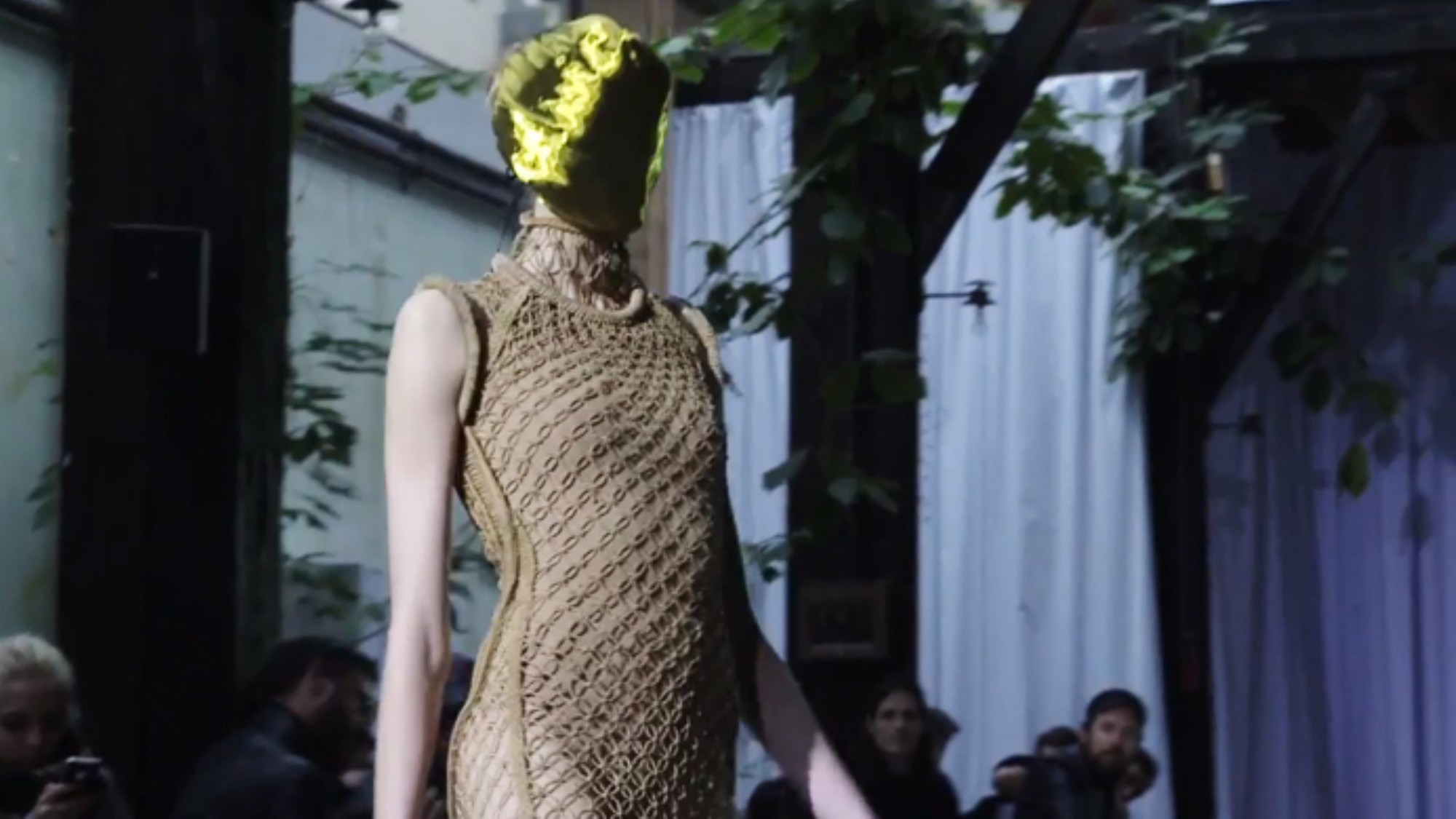In new documentary The Artist is absent, ever-elusive designer Martin Margiela gets the screen time he’s due after leaving a lasting impact on the fashion industry. The film’s release comes as the newly christened Maison Margiela (sans Martin) is again pressworthy with creative director John Galliano. The Yoox-produced short film delves into the artistry behind the rarely seen couturier who founded the brand.
Screened this Saturday at the TriBeCa Film Festival, the 12-minute work allows for a glimpse of Martin Margiela through the eyes of people who worked with and studied him. Designers including Jean-Paul Gaultier, editors like Suzy Menkes and former collaborators such as his director of communications Patrick Scallon explain what the designer meant to fashion and just how ahead of his time he was. Even Raf Simons, who recently got his own big screen moment in Dior and I and cites Margiela’s all white spring/summer 91 collection as a turning point in his life, gets some screen time, too.
Prior to the film’s April 27 debut on Yoox, we break down four takeaways from the “Best Documentary Short” nominee.
Margiela is still as elusive as ever.
As Suzy Menkes put it, part of Margiela’s notoriety stems from the fact that he showed only what he wanted to show: his work. With just one photo of himself in public circulation and a standing policy of never taking his bow at the conclusion of a fashion show, one could only speculate about what was going on in his head. Press interviews were practically nonexistent and in rare situations, conducted over fax. The film reveals that just because the designer is retired, it doesn’t mean he’s let up on the mysterious mystique. After director Alison Chernick was commissioned for the short, she only was in touch with Martin once and strictly via email.
His reconstructive design process was inspired by his mother.
When Margiela was younger, he would watch his mother buy furniture to repaint or rework it. Years later, he would do the same thing, turning thrifted ensembles into new looks. Menkes notes that although the designer was not the first to work with reconstruction on the runway, he was the first to do so exceptionally.
Those anonymous models? Necessity rather than aesthetic choice.
Because Margiela was so reclusive, it was often hard to know what was intentional and what was coincidental. But one thing’s for sure: Margiela’s choice to obscure the models’ faces in his lookbooks was less an aesthetic statement than a financial one. Scallon revealed that the house simply couldn’t afford to pay the agencies to use the models, and put black bars over the their faces to circumvent fees.
If you’re looking for Galliano, you won’t find him in this film.
Margiela isn’t the only one absent from the film: so is the house’s current creative director John Galliano. While the making of the documentary could have been a mechanism for Galliano to publicly build a connection with the founding designer, The Artist is absent does not explore the pair’s relationship. And given that the interview subjects were selected from a list of names provided to Chernick by Margiela himself, one has to wonder if Galliano’s absence was merely an oversight.
Credits
Text Mikelle Street
